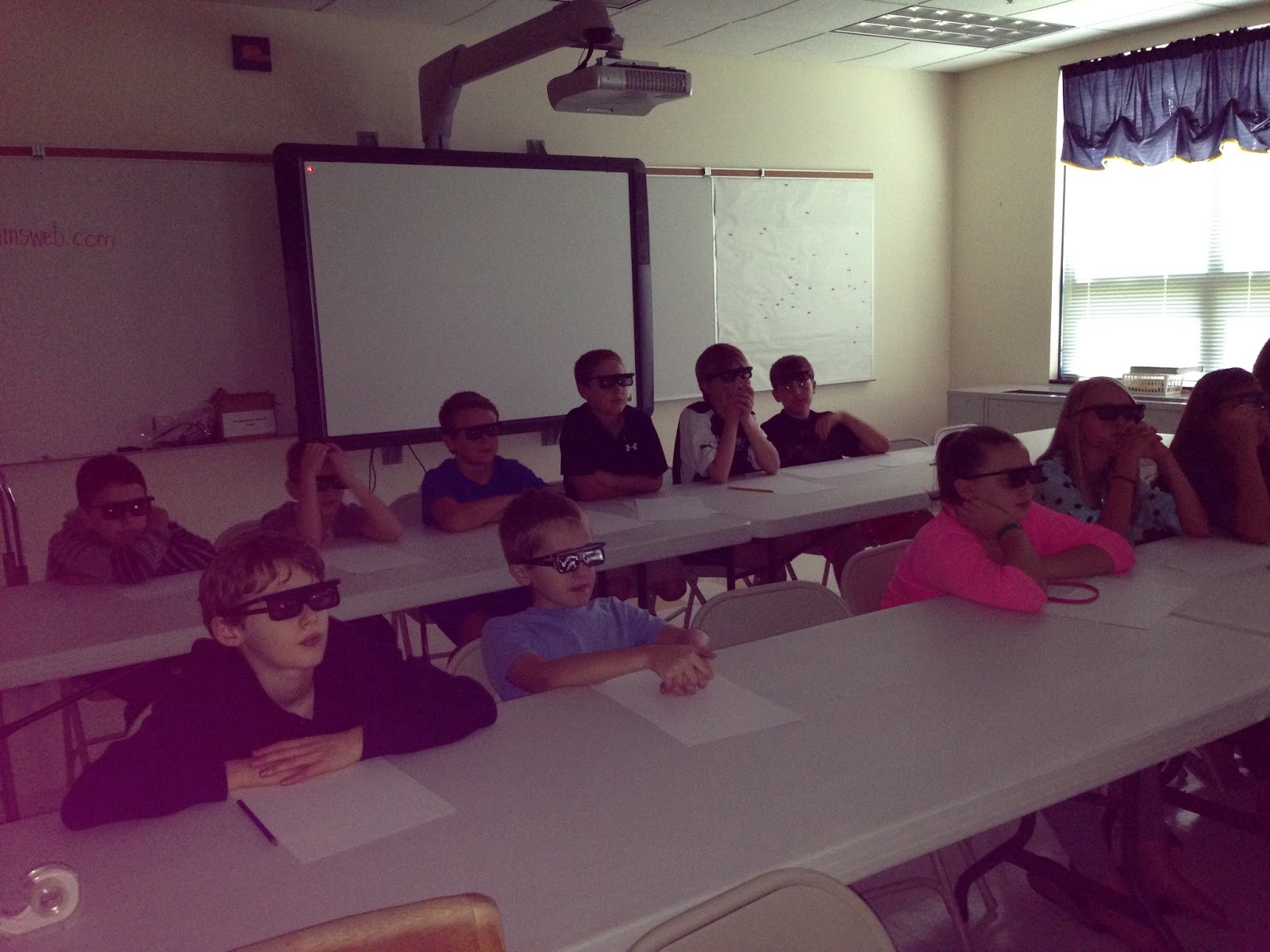 Do you know what this is? After an amazing assembly called 3D for Kids, I am now proud to say that all of my students can answer this question. For the answer, please click here.
Do you know what this is? After an amazing assembly called 3D for Kids, I am now proud to say that all of my students can answer this question. For the answer, please click here.This past Friday, we had the very fortunate opportunity of having Jeff Boller, an award-winning filmmaker, come to our school to speak to us about the science behind 3D. In order to keep the group sizes small, 5th grade came to one session and 6th came to another.
During the presentation, students learned how to take photos, make videos, and draw in 3D. Everything was done using a hands-on approach and my students were enthralled for the full hour. This presentation was so good that it even kept my attention for both sessions. Nobody wanted it to end!
 Jeff explained how and why 3D works by using simple materials (tinsel garland, cardboard cutouts, and homemade sandwich board-style signs). The presentation began with Jeff taking two photos of the groups to show
Jeff explained how and why 3D works by using simple materials (tinsel garland, cardboard cutouts, and homemade sandwich board-style signs). The presentation began with Jeff taking two photos of the groups to show them how to turn a regular photo into 3D. Next, the students created a Jurassic Park themed video and learned about the Spielberg Face (look it up on YouTube - so funny!). Jeff also showed the students the role of a dolly grip. After learning how to draw in 3D, we were able to watch one of the music videos that Jeff created titled, "A Geek Like Me." He is very talented and I loved it when I heard some of my students humming along.
 This presentation was the perfect fit for my students. I have a few who are very interested in video creation and others would like to be animators when they are older. 3D for Kids exposed everyone to another STEM field and took their limited knowledge of how 3D works to a whole new level.
This presentation was the perfect fit for my students. I have a few who are very interested in video creation and others would like to be animators when they are older. 3D for Kids exposed everyone to another STEM field and took their limited knowledge of how 3D works to a whole new level.As a teacher, I really enjoyed the follow-up that Jeff provided me with. He sent a link to the pictures and videos he took for me to pass on to my students. They are able to view everything in 3D with the glasses he gave each of them. He also gave me some ideas of how to extend his presentation into my classroom. I would definitely give this 2 thumbs up!
Grab your 3D glasses and check out our videos, by going to this link. You can compare the video on this page to the 3D version. You can also get more information about Jeff and his 3D for Kids presentation here.
Thanks, Jeff!!
Here's to STEM!
Mrs. Giran

